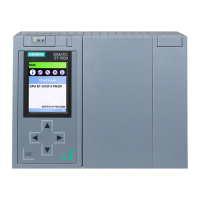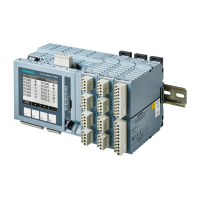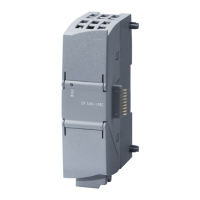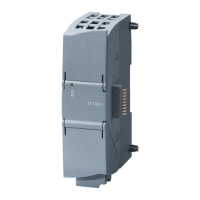Link-up and update
8.3 Time monitoring
CPU 410-5H Process Automation/CPU 410 SMART
System Manual, 10/2013, A5E32631667-AA
117
8. For for each IO subsystem, this results in:
T
P15
(IO subsystem) = T
PTO
- (2 x T
max_Akt
+ T
WA
+ T
PROG
+ T
PN_UM
+ T
Device_UM
) [1]
P15
(DP master system) < 0 or T
P15
(IO subsystem) < 0, stop the calculation here.
are shown below the following example calculation. Make appropriate
changes and then restart the calculation at 1.
9. Select the minimum of all T
P15
(DP master system) values.
This time is referred to below as TP15_HW.
10.Determine the share of the maximum inhibit time for I/O classes > 15 that is required by
the minimum I/O retention time (T
P15_OD
):
T
P15_OD
= 50 ms + min. I/O retention time [2]
P15_OD
> T
P15_HW
, stop the calculation here. Possible remedies are shown below the
alculation. Make appropriate changes and then restart the calculation
11.Using the information in Chapter Performance values for link-up and update
(Page 120), calculate the share of the maximum inhibit time for priority classes > 15 that
is required by the user program (T
P15_AWP
).
P15_AWP
> T
P15_HW
, stop the calculation here. Possible remedies are shown below the
e calculation. Make appropriate changes and then restart the calculation
12.The recommended value for the maximum inhibit time for priority classes > 15 is now
obtained from:
T
P15 =
MAX (T
P15_AWP
, T
P15_OD
) [3]
Example of the calculation of T
P15
In the next steps, we take an existing system configuration and define the maximum
permitted time span of an update, during which the operating system does not execute any
programs or I/O updates.
There are two DP master systems and one IO subsystem: DP master system_1 is connected
via the DP interface of the CPU, and DP master system_2 is connected to the CPU via an
external DP master interface. The IO subsystem is connected via the integrated Ethernet
interface.
